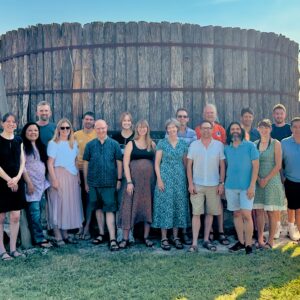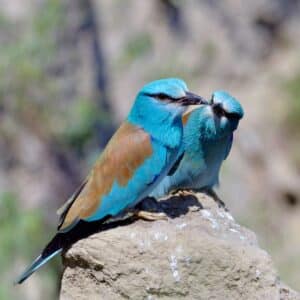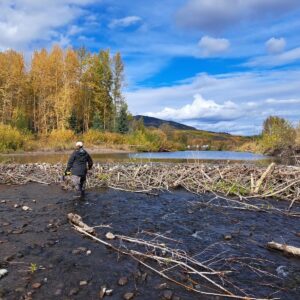
A celebration of bird ringing!

A celebration of bird ringing!
While celebrating 40 years of conservation work, we have another major milestone to share this year: around the world, A Rocha has ringed over 250,000 birds!
When A Rocha was founded, bird studies were the first way that we began to understand the Algarve in Portugal. In their vulnerable position at the top of an ecosystem, birds are good indicators of an environment’s health, and are captivating to experts and novices alike. The bird ringing programme at Cruzinha began in 1987, and we now have programmes in the Czech Republic, Kenya and France, as well as ringing in Canada, the UK, Lebanon and South Africa over the years.
 Ringing allows scientists to track bird migration, and after 40 years we have collected a wealth of information. Ringing involves putting a small ring (or band) on an individual bird’s leg. The ring will be numbered and will typically have the address of the ringing scheme, so that if that bird is found, its whereabouts can be reported. In Kenya and France the A Rocha science teams have also begun equipping Grey Plovers Pluvialis squatarola and European Rollers Coracias garrulus (respectively) with tiny satellite transmitters, which allows them to track the birds’ migration in real time. A Rocha France tracked a European Roller that traveled the 2,500 km between France and Libya in just 36 hours: a record for the longest non-stop flight for the species!
Ringing allows scientists to track bird migration, and after 40 years we have collected a wealth of information. Ringing involves putting a small ring (or band) on an individual bird’s leg. The ring will be numbered and will typically have the address of the ringing scheme, so that if that bird is found, its whereabouts can be reported. In Kenya and France the A Rocha science teams have also begun equipping Grey Plovers Pluvialis squatarola and European Rollers Coracias garrulus (respectively) with tiny satellite transmitters, which allows them to track the birds’ migration in real time. A Rocha France tracked a European Roller that traveled the 2,500 km between France and Libya in just 36 hours: a record for the longest non-stop flight for the species!

Most of what we know about bird migration is thanks to ringing, which not only tells us where birds go but also when they depart and arrive, where they stop on their migration, how long they live and their fidelity to stop-over sites. Colin Jackson remembers catching the same Chiffchaff in the same net in an orange grove in Portugal two to three years in a row!
With a bird in the hand, you gain much more information than you could learn by observing them from afar. To catch the birds, teams usually set up nearly invisible mist nets in the early hours of the morning. Flying birds get caught in the net, then are carefully extracted and taken to the ringing station. After identifying the bird and fastening the ring, the ringer determines the bird’s age and records the moult. This can show the impacts of climate change, which causes birds to moult at unusual times. Finally, they will measure and weigh the bird, which gives them a sense of the health of a population: if the average mass is reducing, for instance, they may conclude that conditions are poor for feeding. If a bird due for migration has a good amount of fat set aside, we can conclude it is almost ready to leave. Gaining the certification to become a bird ringer is a rigorous process that can take years, ensuring that the welfare of the birds always comes first.
By uniquely marking birds, we can tell how many of them there actually are in an area, and with the mist nets, we can catch birds that we didn’t even know were present. Ultimately, we gain a stronger understanding of the welfare of the species, of how humans have impacted birds and how we can better protect them. As well as its scientific importance, bird ringing can also be valuable in environmental education. With careful supervision so that the birds do not become stressed, it enables people to experience the beauty, fragility and importance of birds and, through that, to be inspired themselves to care for birds and the ecosystems they depend on.

To watch bird ringing in action and learn about its history and impact, check out this video from A Rocha Kenya.

